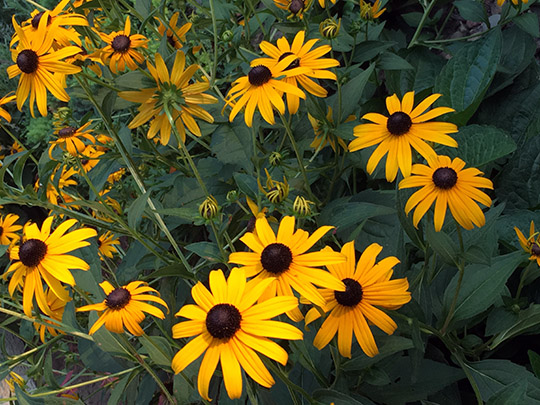URBANA, Ill. – If you missed the window for planting native plants in your garden this spring, don’t worry, you still have time to get them in the ground in the fall.
“Growing native plants is a great way to benefit the environment, wildlife, and bring some interesting and beautiful plants to your garden,” says Gemini Bhalsod, University of Illinois Extension horticulture educator. “Fall is a great time to plant and establish native gardens because the weed pressure is lower than in the spring.”
Fall can also be a great time to plant native seeds, since many Illinois native plants require a cold, moist winter to germinate in the spring.
Before planting, Bhalsod says, it is important to scout for the right spot in your landscape. “Whether the area is sunny or shady, or the soil is moist or dry, there are so many options for native plants to put in your yard.”
Gardeners should think about the sun/shade pattern in planting sites. Does the spot get morning or afternoon sun, full-day sun, or is it mostly in the shade? Also think about the sun during different times of the year; the area under a large tree might be full-sun in the spring, but shady after the tree gets its summer leaves. Also consider whether the area tends to retain water after a rain event or drains quickly. Finally, think about the view. Is the garden against a wall, where the tall plants will have to go in the back, or can the garden bed be viewed from all sides?
After you have asked yourself these questions and taken a good inventory of your site, now comes the fun part: picking plants for that area! Some of Bhalsod’s favorites for full sun are blue false indigo (Baptisia australis), purple prairie clover (Dalea purpurea), and bee balm (Monarda fistulosa). Be sure to include a mix of colors and bloom times so you can ensure blooms throughout the whole growing season. Visit your local Extension office for suggestions for and information about plants that work well for your area.
After choosing your plants and making a map of the garden bed, it’s time to prep the site, Bhalsod says. First, you will need to kill off the existing vegetation before planting. “One of the best ways to kill off existing weeds or turf is to smother them,” she says. You can do this by renting a sod cutter and removing grass completely or by layering wet cardboard or newspaper on the area you want to clear. Be sure to weigh the cardboard down to prevent light from penetrating. A downside is that you have to wait a few months for the grass to die off. If you don’t have the time, put soil and mulch directly on top of the cardboard or newspaper and plant. If you take this approach, be sure to plant small transplants and keep them well watered.
For any fall plantings, it is important to water regularly throughout the fall so plants develop the deep root system they need to survive the winter. Ideally, plant in September to allow enough time for root development. But don’t expect blooms right away; it could take a year or two for flowers to form.
Follow these steps and you will be on your way to a well-thought-out and organized native garden this fall.
Source/news writer: Gemini Bhalsod, 224-347-1090, gbhalsod@illinois.edu
